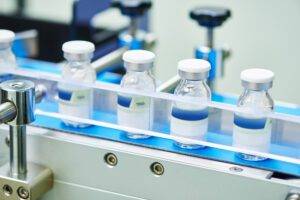UK inflation rate slows to 7.9% in June

<?xml encoding=”utf-8″ ?????????>
The UK’s inflation rate has slowed more than expected to the weakest pace in 13 months, falling to 7.9 per cent on the back of a fall in petrol prices last month.
Headline consumer price inflation dropped in June from 8.7 per cent to the lowest reading since March 2022, when the war in Ukraine pushed up global gas prices, figures from the Office for National Statistics show.
The rate of 7.9 per cent last month was better than economists had expected and will provide some relief to the Bank of England, which has been surprised by how stubbornly high price rises have been for most of the year.
After the data was published the pound fell against the dollar and euro to $1.2942 and €1.1532 on expectations that the Bank of England will now raise the base rate by less than expected when its monetary policy committee meets early next month.
The FTSE 100 opened higher as the weaker pound boosted the exporter-heavy index to a more than two-week high, up 1.4 per cent, of 107 points, to 7561.82. The more UK-focused FTSE 250 rose 3 per cent, or 560 points, to 19,183.43.
In more encouraging news for consumers and the Bank, a closely watched measure of core inflation also dropped back from a 31-year high, declining from 7.1 per cent to 6.9 per cent last month. Core inflation measures price rises in goods and services excluding volatile items such as energy and food and is a proxy for underlying inflationary pressures in the economy.
The ONS said that the drop in inflation last month was down to falling motor fuel prices and a decline in energy costs compared to June 2022. Inflation in core goods and services also declined to 8.5 per cent and 7.2 per cent respectively.
Grant Fitzner, chief economist of the ONS, said: “Inflation slowed substantially to its lowest annual rate since March 2022, driven by price drops for motor fuels. Core inflation also fell back after hitting a 30-year high in May.”
UK inflation has been consistently higher than rival economies in the US and Europe, where price growth has fallen back more sharply this year, after peaking at four-decade highs in 2022. Headline inflation in the US eased to 3 per cent in June and averaged at 5.5 per cent across the 20 countries in the eurozone.
Rising food prices have been one of the major factors in keeping inflation high in recent months, with the ONS saying that food price inflation subsided from 18.2 per cent to 17.4 per cent but “remains at very high levels”. The ONS said the biggest falls in price growth last month were for milk, cheese and eggs.
Inflation for furniture, restaurants and hotels also slowed last month, with the ONS saying there were “no large offsetting upward effects” in June.
Jeremy Hunt, the chancellor, responded to the figures saying that the government was still “not complacent and know that high prices are still a huge worry for families and businesses”.
“The best and only way we can ease this pressure and get our economy growing again is by sticking to the plan to halve inflation this year,” he said.
The lower than expected rate of inflation may push policymakers on the Bank’s monetary policy committee into a smaller interest rate rise of a quarter of a percentage point early next month. Before the data was released investors had been expecting the MPC to increase the base rate by half a percentage point, bringing borrowing costs up to 5.5 per cent.
Samuel Tombs, chief UK economist at Pantheon Macroeconomics, said: “June’s CPI report gives the MPC the green light to increase Bank rate by 25 basis points next month, rather than by the hefty 50 basis point increment priced in by markets as the most likely outcome.”
However, Yael Selfin, chief economist at KPMG, warned that the figures might not be enough for the Bank of England to change course. “While the Bank of England will welcome the fall in inflation, it is unlikely to substantially change its hawkish policy stance as inflation continues to run significantly above target,” she said.




